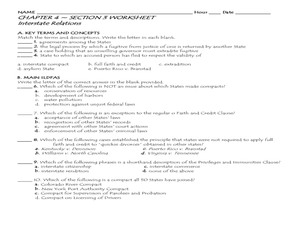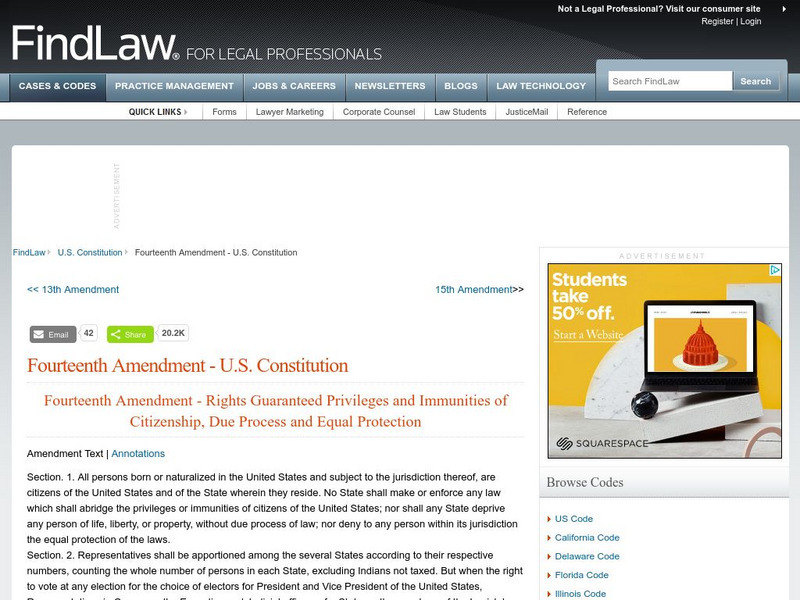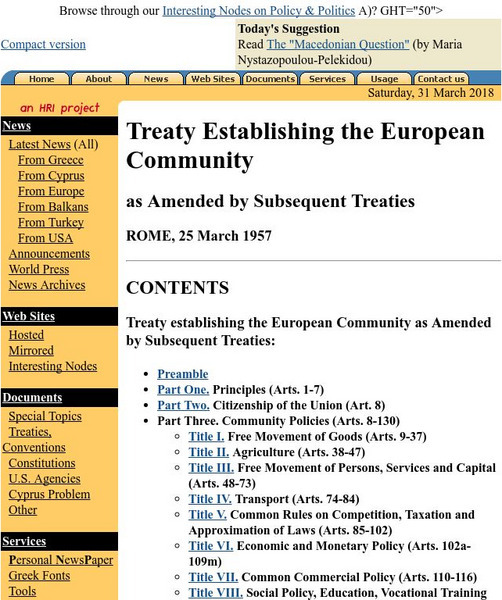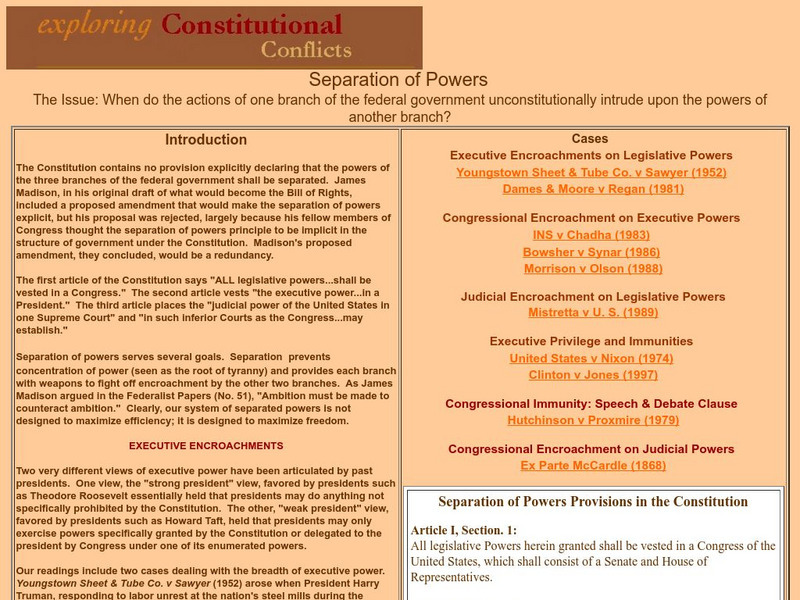Curated OER
Interstate Relations
Your class might be clear on how the federal government relates to states, but what about how states relate to each other? Challenge your students with this worksheet, which could function as a review activity or as a quiz. Questions...
Curated OER
The Saturday Night Massacre
Students look at the actions taken by Nixon from several perspectives. They explain the Constitutional issues involved with the firings and the concept of Presidential privilege as it evolved during this period. Students draw conclusions...
Heritage Foundation
The Constitution, Federalism, and the States
The divide between federal and state government is responsible for much of tension that continues to this day, partly because of the US Constitution. The activities in the 14th lesson in a series of 20 are designed to help learners...
Curated OER
A Forum on Racism
Twelfth graders compare and contrast the work of Malcolm X and Martin Luther King, Jr. In this racism lesson, 12th graders read The Autobiography of Malcolm X and discuss how Malcolm X and Martin Luther King, Jr. approached ending racism.
Thomson Reuters
Find Law: u.s. Constitution: Article I, Section 6
This resource presents section 6 of article 1 of the U.S. Constitution, which details the rights and disabilities of members of Congress. The site discusses congressional pay, and privileges from arrest and of speech or debate in an...
Thomson Reuters
Find Law: u.s. Constitution: Fourteenth Amendment
Presents the Fourteenth Amendment - Rights Guaranteed Privileges and Immunities of Citizenship, Due Process and Equal Protection. Includes a lengthy list of annotations to the Amendment.
Other
Treaty Establishing the European Community
This page provides access to the "Treaty establishing the European Community as Amended by Subsequent Treaties: ROME, 25 March 1957." Links are provided for each article.
University of Missouri
Exploring Constitutional Conflicts: Separation of Powers
When do the actions of one branch of the federal government unconstitutionally intrude upon the powers of another branch? This article surveys the history of this question in historic Supreme Court cases.







